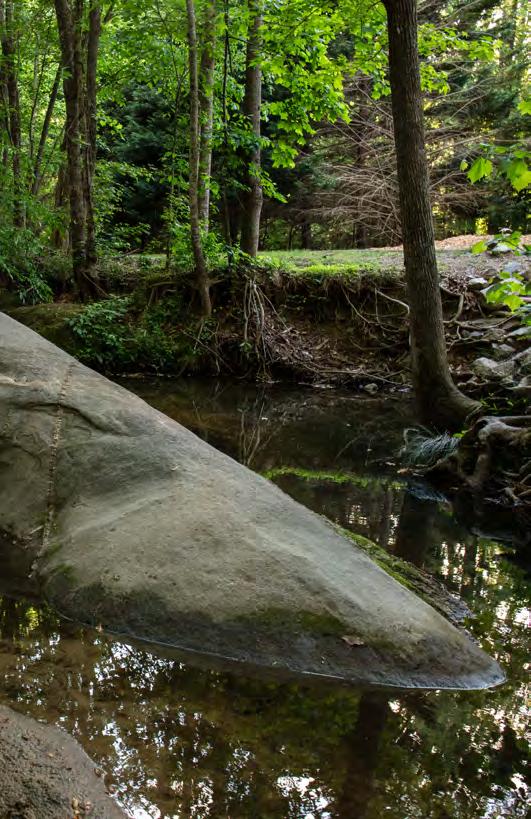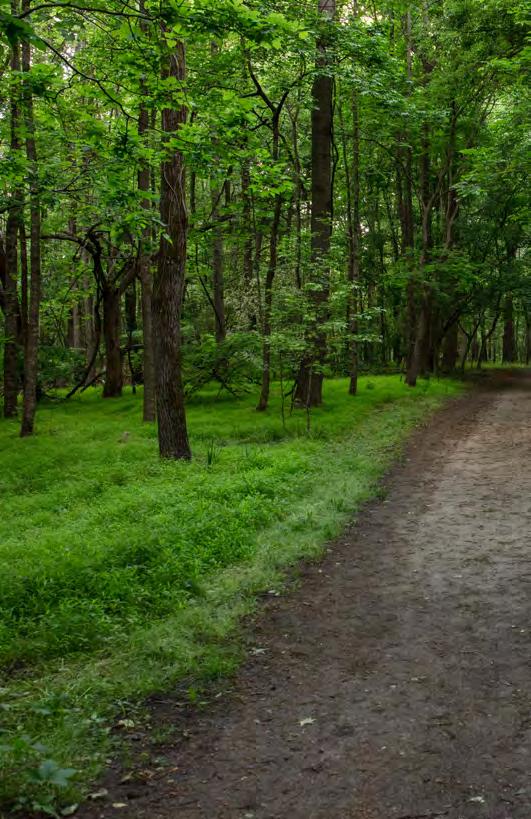






The objective of the tree trail is to use the information below to identify numbered trees along White House Road. By using the sets of choices in the “dichotomous key” below and matching them up with characteristics you can observe on each tree, you can narrow each numbered tree down to one tree species. Each choice you make on this key leads you to another set of choices on the key (indicated by numbers on the right-hand side), or to the name of a tree species that has those characteristics. Once you finish, you can check your answer(s) using the answer key at the end.
In general, it could help to look at multiple leaves/branches on a tree, in case the one leaf/branch you examine is not typical. It also helps to make comparisons back and forth between trees, so you can better visualize the differences you are looking for in each set of choices. Feel free to go back and forth between trees on the trail if it helps, and to use the photos included in this key to help you make those comparisons.
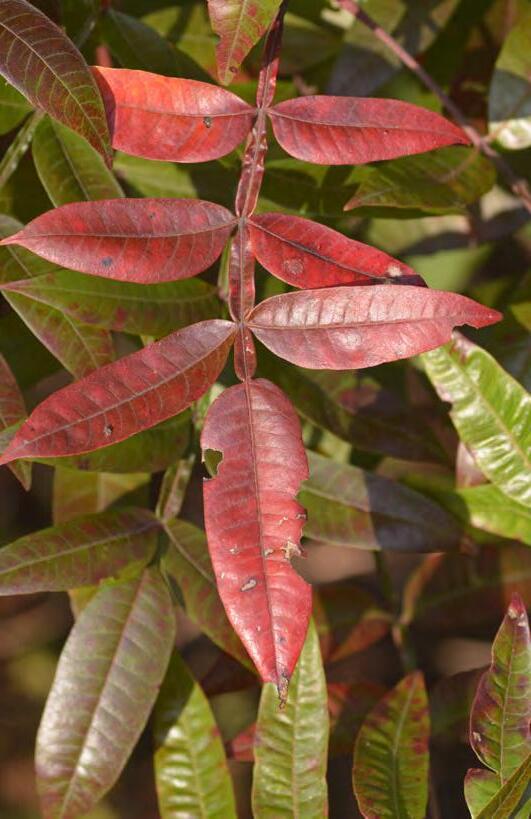
1a Needle-like leaves

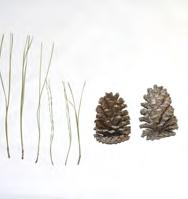
1b Broad leaves (not like needles)

Go to 2a and 2b
2a Leaves compound: many separate leaf-like parts (called leaflets) all on one leaf stem (called a petiole or rachis)� Usually, buds are at the bases of the whole leaf� The leaf stem of mature leaves ends in a leaf, not a growing stem tip or a bud (see other examples of compound leaves below) Black Walnut (Juglans nigra)
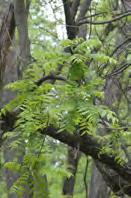





Note: In the fall, compound leaves are difficult to detect, as leaflets often fall off of the leaf stem.





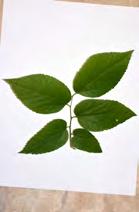


Each photo above shows a single compound leaf with multiple leaflets
SEPARATE, SIMPLE LEAVES
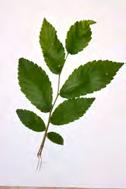
Notice buds at the bases of leaves and/or at the ends of branches
SEPARATE, SIMPLE LEAVES

2b Leaves simple: one leaf blade on a leaf stem (called a petiole), buds usually by at least some bases of the leaves, in “leaf axils”, where leaf petioles meet the stem, (examples below)
Go to 3a and 3b











BUDS AT LEAF BASES LEAF STEMS (PETIOLES)

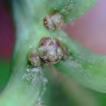


3a Simple opposite leaves (leaves come off the stem in pairs, one opposite the other on the stem)
Go to 4a and 4b
OPPOSITE LEAF ARRANGEMENT
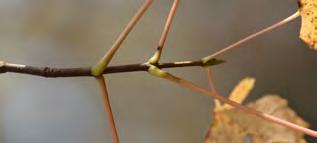
3b Simple alternate leaves (one leaf grows from the stem in each location, leaves alternate sides; not in pairs)����������������������Go to 5a and 5b
ALTERNATE LEAF ARRANGEMENT
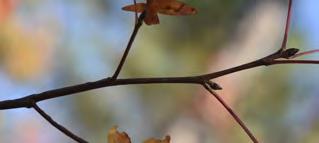
4a Leaves lobed� Lobes are parts of the leaf that extend outward from the main (central) veins, and contain multiple veins (see # 5 for examples of lobed leaves)

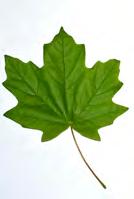


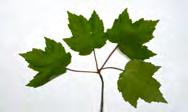
Note: If the leaf teeth are fine and small, it could be Red Maple (Acer rubrum)
4b Leaves unlobed; leaves show tiny stretchy strings when torn)

STRINGS VISIBLE WHEN LEAF IS TORN




5a Leaves alternate and lobed� Lobes are parts of the leaf that extend outward from the main (central) veins, and contain multiple veins; examples below
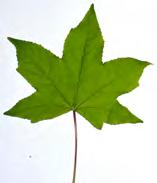
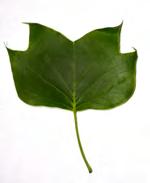

5b Leaves unlobed
6a Leaves with an even number of pointed lobes (usually 4 lobes, but sometimes, 2, 6, 8, or 10 lobes
Tulip Tree, Tulip Poplar, or Yellow Poplar (Liriodendron tulipifera)
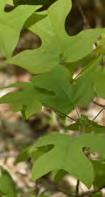
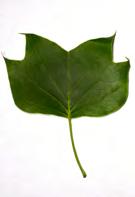
SIDE

Tulip Tree, Tulip Poplar (Liriodendron tulipifera)

6b Leaves with 5 more lobes (usually an odd number of lobes) ���������������
7a Leaves with 5 (or 7) pointed lobes
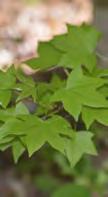
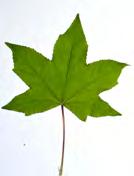

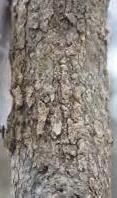
7b Leaves with more than five rounded lobes




Note: at least 8 other oak species occur along this road or elsewhere in the preserve, some with pointed lobes on their leaves, or no lobes at all. 8a Leaf with large spines on the leaf margin (edge)
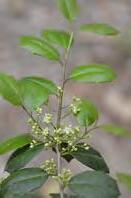

SPINES ON THE MARGINS


8b Leaf with no spines on the margins
Go to 9a and 9b
9a Leaf usually 3-4X longer than wide, with tiny teeth (less than 1 mm long, almost invisible) around the margins and tiny hairs on the midvein
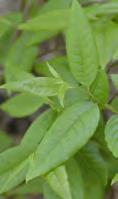




9b Leaf less than 3X as long as wide, with larger teeth around the margins
10a Leaves with small teeth (but larger than 1 mm) that start ¼ of the way up the leaf margin (bases untoothed), leaves often teardropshaped, trunk of mature trees often has bumps/warts
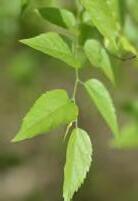




10b Leaves with teeth down almost to the base, trunk looks smooth but feels rough
Go to 11a and 11b
11a Leaves with very regular veins and teeth all of one size, with a papery texture, and solid, smooth gray bark��������������������������������������������������
American Beech (Fagus grandifolia)




SMOOTHLOOKING, BARK
11b leaves with larger and smaller teeth mixed, buds small, bark gray and sinewy (ripples run along the trunk)
American hornbeam, Ironwood, Musclewood, Blue Beech (Carpinus caroliniana

DOUBLE-TOOTHED LEAVES (SMALLER TEETH ON TOP OF THE LARGER TEETH)





The numbers below correspond to the number on labeled trees:
1. Black Walnut (Juglans nigra)
2. Sugarberry (Celtis laevigata)
3. American Hornbeam (Carpinus caroliniana)
4. White Oak (Quercus alba)
5. Flowering Dogwood (Cornus florida)
6. American Sweetgum (Liquidambar styraciflua)
7. American Holly (Ilex opaca)
8. Sourwood (Oxydendrum arboreum)
9. American Beech (Fagus grandifolia)
10. Tulip Tree (Liriodendron tulipifera)
11. Loblolly Pine (Pinus taeda)
12. Southern Sugar Maple (Acer floridanum)
